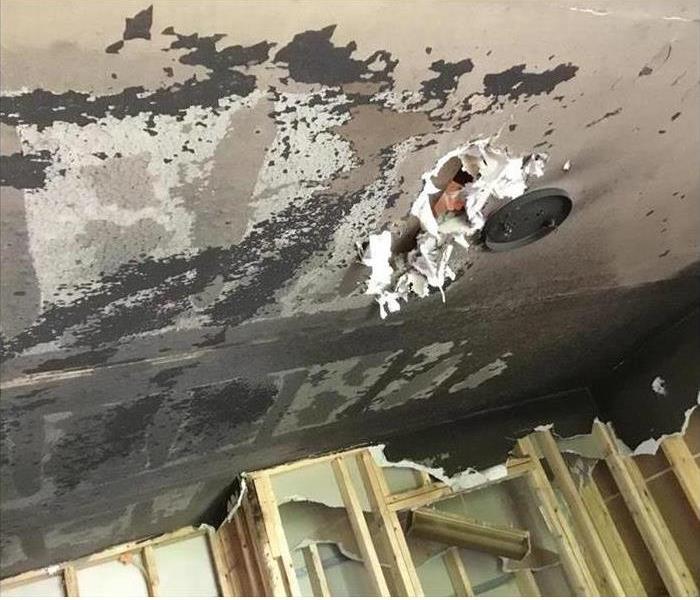Fires during Construction and Renovations
9/21/2022 (Permalink)
The days are longer and the weather is warmer, it's time get those construction and renovation projects underway!
Fires in structures under construction are more common than you may think.
According to the NFPA fire departments responded to an average of 3,840 fires of structures that were under construction and 2,580 fires in structures that were under major renovations per year between 2013-2017.
The cost annually for this is $304 million in direct property damage and three of every four fires in structures under construction involved residential properties.
Fire at a construction site is bound to endanger the lives of workers and anyone else on site. A fire at the site can also damage the structure and destruction of machinery and materials; ultimately putting the job at a stop and delaying the whole project.
It is imperative that every project has a clearly laid out fire protection plan and a project manager/construction manager to make sure that the plan is in place and that every one is aware of the plan and point of contact.
Fires at construction sites can start for many reasons and it is important to know fire types and how to handle each one.
Class A fires occur in wood, rubber, paper,cloth and most plastics. The most effective type of extinguishing agent is one using water, or solutions containing large concentrations of water,because the ‘‘quenching-cooling’’ effect reduces the temperature of the burning material below its ignition temperature. Fire extinguishers suitable for this type of fire are designated with a classification of “A” on the label
Class B fires occur in flammable or combustible liquids, such as petroleum products and greases.
A “blanketingsmothering” effect of an agent that excludes oxygen or inhibits the chemical chain reaction is most effective. Extinguishers labeled “Class B” employ carbon dioxide, dry chemical, Halon or foam.
Class C fires involve electrical equipment. The extinguishing agent must be non-conductive. Carbon dioxide, dry chemical and Halon are the normal types used for electrical fires.
Class D fires involve combustible metals such as aluminum, magnesium, zirconium and titanium. The use of water and some other conventional types of extinguishing agents are ineffective and may cause a violent reaction. These fires can be extinguished with specially prepared agents. Where this hazard exists, extinguishing agents with a D-class rating should be provided. All on-site fire extinguishers should be serviced and inspected.
According to the NSC The woodworking area should be set up in a remote area of the project.
Where possible, dust-collecting apparatus should be installed for power equipment. Dust, scraps and refuse should be removed regularly and properly disposed of. Smoking should be prohibited in the area.
Cutting and welding sparks cause more
construction fires than any other ignition source.
The person responsible for fire safety should implement fire protection systems and ensure
adequate precautions are taken.
The NSC also recommends to expedite the installation of automatic sprinklers.
Underground mains, hydrants and a source of water should be provided in the earliest stages of construction. The goal should be to get sprinklers in service ahead of combustible occupancy and immediately following combustible construction.
Making sure that all local codes are being implemented and followed is imperative to a safe and effective worksite.
SERVPRO of Claremont, Sunapee, Newfound Lake welcomes any and all questions about fire safety! Give us a call today at 603-298-6942

 24/7 Emergency Service
24/7 Emergency Service
